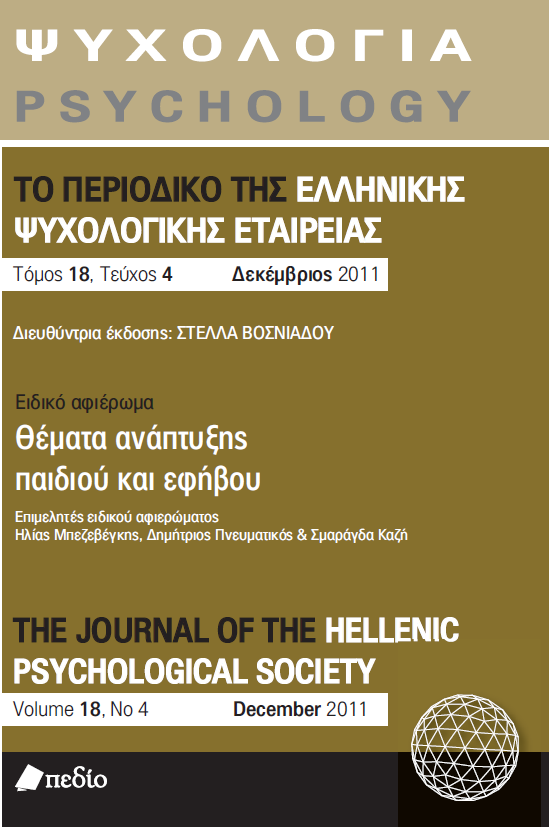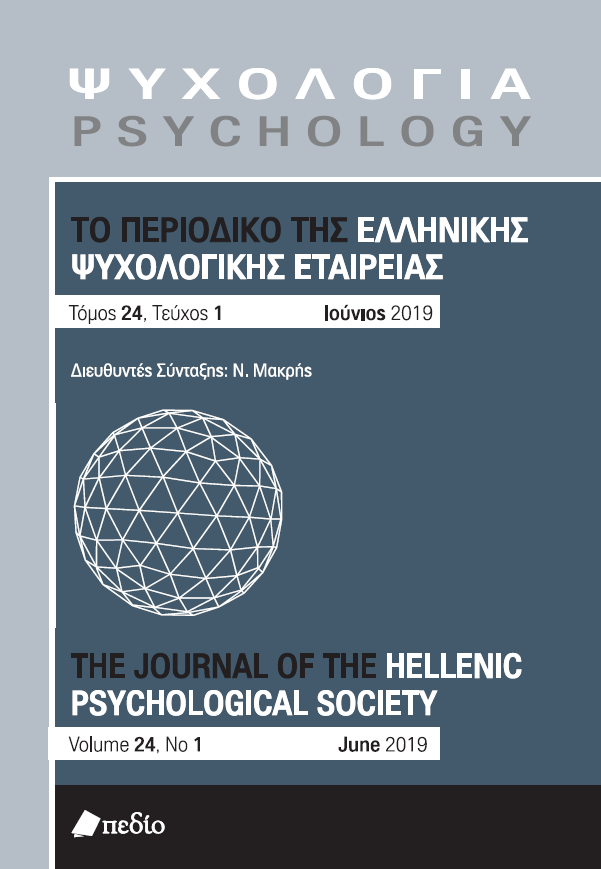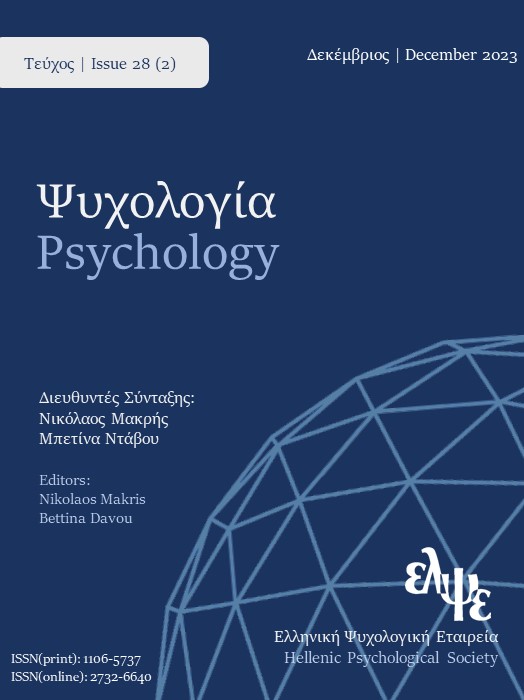Το σχήμα και ο αριθμός ως αναπαραστασιακά εργαλεία επίλυσης προβλημάτων χρονικών σχέσεων

Περίληψη
Ο χρόνος είναι μια σύνθετη έννοια. Συνεπώς, η κατανόηση και ο χειρισμός της σε γνωστικό επίπεδο αναπτύσσονται, κατά τη διάρκεια της παιδικής ηλικίας και της εφηβείας, με αργούς ρυθμούς. Η παρούσα έρευνα εξετάζει τη συλλογιστική, καθώς και τη μεταγνωστική ικανότητα παιδιών σχολικής ηλικίας κατά την επίλυση προβλημάτων χρονικών σχέσεων. Διερευνά επίσης την επίδραση διαφορετικών αναπαραστασιακών μέσων ποσοτικοποίησης του χρόνου, δηλαδή των σχημάτων και των αριθμών, στις επιδόσεις των παιδιών. Στην έρευνα συμμετείχαν 233 παιδιά Β’, Γ’ και Δ’ Δημοτικού, στα οποία παρουσιάστηκαν επτά προβλήματα προς επίλυση. Μετά την αρχική τους απάντηση σε κάθε πρόβλημα, τα μισά παιδιά κλήθηκαν να αναπαραστήσουν τις περιγραφόμενες στα δεδομένα του προβλήματος χρονικές σχέσεις χρησιμοποιώντας πρώτα αριθμούς και μετά σχήματα, ενώ για τα άλλα μισά η σειρά κατασκευής των αναπαραστάσεων ήταν η αντίστροφη. Μετά την κατασκευή της κάθε αναπαράστασης, τα παιδιά ήλεγχαν την αρχική τους απάντηση στο πρόβλημα, έχοντας την επιλογή είτε να τη διατηρήσουν είτε να την τροποποιήσουν. Τα αποτελέσματα έδειξαν ότι για τα παιδιά αυτής της ηλικίας:
(α) η «αρχική χρονική τάξη» είναι μια έννοια που κατανοούν δύσκολα σε σύγκριση με τις έννοιες «τελική τάξη» και «διάρκεια γεγονότων»
(β) η χρήση αριθμών οδηγεί σε ορθότερες αναπαραστάσεις απ’ ό,τι η χρήση σχημάτων και, όταν προηγείται, διευκολύνει τη δεύτερη, ενώ δεν παρατηρείται το αντίστροφο φαινόμενο
(γ) μέχρι περίπου την ηλικία των 10 χρόνων, οι μεταγνωστικές ικανότητες, και συγκεκριμένα οι ικανότητες αυτοδιόρθωσης, των παιδιών φαίνεται να είναι πολύ περιορισμένες.
Λεπτομέρειες άρθρου
- Πώς να δημιουργήσετε Αναφορές
-
Σαμαρτζή Σ., & Καζή Σ. (2020). Το σχήμα και ο αριθμός ως αναπαραστασιακά εργαλεία επίλυσης προβλημάτων χρονικών σχέσεων. Ψυχολογία: το περιοδικό της Ελληνικής Ψυχολογικής Εταιρείας, 18(4), 397–420. https://doi.org/10.12681/psy_hps.23730
- Τεύχος
- Τόμ. 18 Αρ. 4 (2011)
- Ενότητα
- ΕΙΔΙΚΟ ΑΦΙΕΡΩΜΑ

Αυτή η εργασία είναι αδειοδοτημένη υπό το Creative Commons Attribution-ShareAlike 4.0 International License.
Το περιοδικό ΨΥΧΟΛΟΓΙΑ έχει υιοθετήσει μία πολιτική Platinum open-access. Τα έξοδα υποβολής, επεξεργασίας ή δημοσίευσης των εργασιών καλύπτονται από την Ελληνική Ψυχολογική Εταιρεία. Τα πνευματικά δικαιώματα των δημοσιευμένων εργασιών προστατεύονται από την άδεια 'Creative Commons Attribution-ShareAlike 4.0 International'. Οι Συγγραφείς διατηρούν τα Πνευματικά Δικαιώματα και χορηγούν στο περιοδικό το δικαίωμα της πρώτης δημοσίευσης. Η άδεια αυτή επιτρέπει σε τρίτους, να χρησιμοποιούν την εργασία σε οποιαδήποτε μορφή, με την προϋπόθεση της διατήρησης των διατυπώσεων που προβλέπονται στην άδεια σχετικά με την αναφορά στον αρχικό δημιουργό και την αρχική δημοσίευση στο περιοδικό ΨΥΧΟΛΟΓΙΑ. Επιπλέον, κάθε διανομή της εργασίας οφείλει να γίνεται με τους ίδιους όρους διανομής, δηλαδή με την ίδια άδεια Creative Commons.








